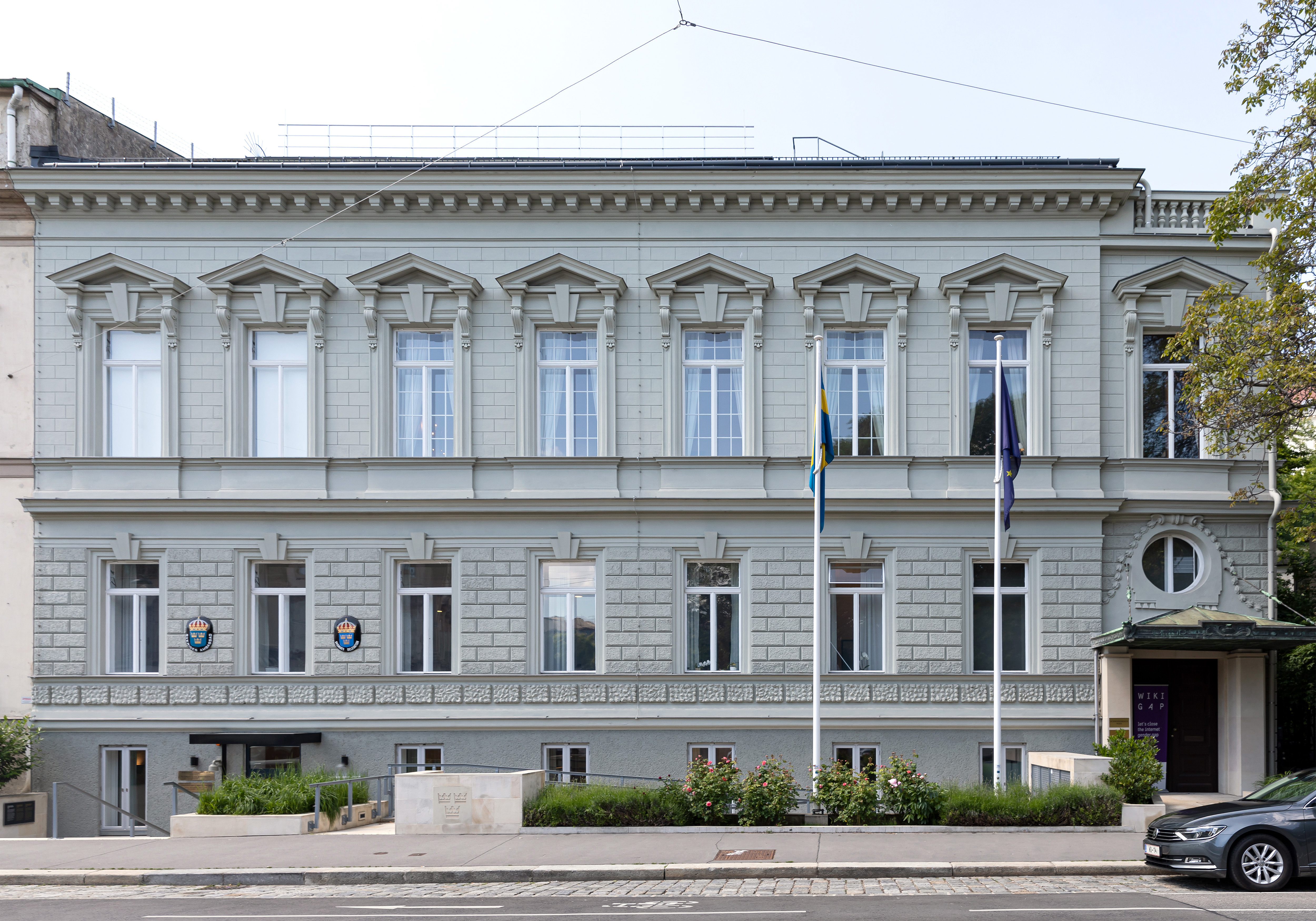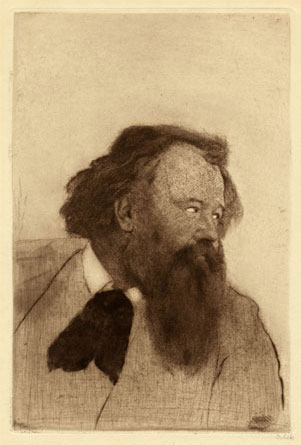|
Neues Wiener Tagblatt
The Neues Wiener Tagblatt was a daily newspaper published in Vienna from 1867 to 1945. It was one of the highest-circulation newspapers in Austria before 1938. History The newspaper was founded by Eduard Mayer as a successor to the Wiener Journal. The first issue appeared on March 10, 1867, the year of the Compromise with Hungary and the enactment of the so-called December Constitution, valid until 1918. As early as July 13, 1867, the publisher Moritz Szeps, who had left the Morgen-Post newspaper in a dispute, took over. From 1870 he supported Josef Schöffel with a campaign in his successful fight for the Vienna Woods. Szeps' connection to Crown Prince Rudolf meant that anonymous political texts by the crown prince could repeatedly appear in the paper, in which he advocated the liberal, progressive development of Austria. Szeps remained the sole owner and publisher of the paper until May 15, 1872, then contributed the paper to the Steyrermühl-Verlag publishing house, which he ... [...More Info...] [...Related Items...] OR: [Wikipedia] [Google] [Baidu] |
Moritz Szeps
Moritz Szeps (5 November 1835, Busk – 9 August 1902, Vienna) was an Austrian newspaper tycoon who founded and published the ''Neues Wiener Tagblatt'' (1867-1886), ''Wiener Tagblatt'' (1886-1894), and ''Das Wissen für'' ''Alle'' (1900). Early life Szeps was born into a Jewish family in Busk, Ukraine in 1835. His father was a doctor, and he initially studied medicine in Lemberg. After going to Vienna to continue his studies, he decided to change careers and became a journalist instead. Journalism and publishing From 1855 to 1867, he was editor-in-chief of the '. In 1867, following the resignation of most of its employees, he took over the Neues Wiener Tagblatt, which became the leading a liberal newspaper in Austria. As a friend of Crown Prince Rudolf, Szeps published his political writings anonymously. Szeps, however, was not shy about making direct attacks on his opponents and critics. By 1876, he was sufficiently successful to build his own home, the " Palais Szeps" ... [...More Info...] [...Related Items...] OR: [Wikipedia] [Google] [Baidu] |
Emil Löbl
Emil Löbl (February 5, 1863, in Vienna – August 26, 1942, in Vienna) was an Austrian writer and journalist. Life Born into a Jewish family, Löbl was the son of Isak Löbl (Herzl) and Rosalie Löbl (Neumann). Like his older brother Leopold (1844-1907), he studied law at the University of Vienna and received his Dr. jur. degree in 1891. During his studies he was active as a journalist in the Reichsrätlichen Stenografenbüro from 1882. From 1893 to 1898 he served in the k.k. Council of Ministers, and from 1895 as Ministerial Vice-Secretary. He was deputy editor-in-chief at the ''Wiener Zeitung'' and from 1909 editor-in-chief. In 1917 Löbl became editor-in-chief of the NWT (''Neues Wiener Tagblatt''), whose circulation he was able to increase substantially. In March 1938, as Austria prepared to merge with Nazi Germany in the Anschluss, he was fired. Löbl was married to Gisela Gisa Basseches (June 10, 1870-1942). She was deported to the Treblinka concentration camp and murder ... [...More Info...] [...Related Items...] OR: [Wikipedia] [Google] [Baidu] |
Franz-Eher-Verlag
Franz Eher Nachfolger GmbH (''Franz Eher and Successors, LLC'', usually referred to as the Eher-Verlag (''Eher Publishing'')) was the central publishing house of the Nazi Party and one of the largest book and periodical firms during the Third Reich. It was acquired by the party on 17 December 1920 for 115,000 Papiermark. In addition to the major papers, the'' Völkischer Beobachter'' and the ''Illustrierter Beobachter'', the publishers also printed novels, maps, song books, and calendars. The weekly satirical magazine ''Die Brennessel'' was another publication of the company. Adolf Hitler's ''Mein Kampf'' was also published by the firm from 1925 through many editions and millions of copies. History The publishing house was registered by Franz Xaver Josef Eher (1851–1918) in the Munich Handelsregister on 2 December 1901. However, the firm was actually founded with the name ''Münchener Beobachter'' on 2 January 1887. After Eher's death, Rudolf von Sebottendorf took over the fir ... [...More Info...] [...Related Items...] OR: [Wikipedia] [Google] [Baidu] |
Hermann Bahr
Hermann Anastas Bahr (; 19 July 1863 – 15 January 1934) was an Austrian writer, playwright, director, and critic. Biography Born and raised in Linz, Bahr studied in Vienna, Graz, Czernowitz and Berlin, devoting special attention to philosophy, political economy, philology and law. During a prolonged stay in Paris, he discovered his interest in literature and art. He began working as an art critic, first in Berlin, then in Vienna. In 1890 he became associate editor of ''Berliner Freie Bühne'' (''Berlin Free Stage''), and later became associate editor and critic of the ''Deutsche Zeitung'' (''German Newspaper''). In 1894 he began publication of ''Die Zeit'' (''The Times''), and was also editor of the ''Neue Wiener Tagblatt'' (''New Vienna Daily Flyer'') and the ''Oesterreichische Volkszeitung'' (''Austrian Popular Newspaper''). In 1906–07, Bahr worked with Max Reinhardt as a director at the German Theater (german: Deutsches Theater) in Berlin, and starting in 1918 he was a Dram ... [...More Info...] [...Related Items...] OR: [Wikipedia] [Google] [Baidu] |
Werner Bergengruen
Werner Bergengruen (September 16, 1892 – September 4, 1964) was a Baltic German novelist and poet. He was nominated for the Nobel Prize in Literature. Life and career Bergengruen was born in Riga, Governorate of Livonia, which at that time belonged to the Russian Empire. After growing up in Lübeck and attending the Katharineum, he started studying theology in Marburg in 1911. He later changed to studying Germanistics and art history, but failed to graduate; he then moved to Munich. He served as a lieutenant during World War I and joined the Baltische Landeswehr in 1919 to fight against the Bolsheviks. On 4 October 1919, he married Charlotte Hensel (1896–1990), a descendant of the composer Fanny Mendelssohn, and the daughter of the mathematician Kurt Hensel. From the marriage there were four children, Olaf, Luise, Maria and Alexander. Bergengruen started writing novels and short stories in 1923 and decided to become a full-time writer in 1927. While his earlier works ... [...More Info...] [...Related Items...] OR: [Wikipedia] [Google] [Baidu] |
Franz Karl Ginzkey
Franz Karl Ginzkey (8 September 1871, Pola, Austrian Littoral, Austria-Hungary (now Pula, Croatia) – 11 April 1963, Vienna) was an Austro-Hungarian (then Austrian) officer, poet and writer. His arguably most famous book ''Hatschi Bratschis Luftballon'' (''Hatschi Bratschi's Balloon'') captivated generations of children. Life Ginzkey, son of a Bohemian German professional officer of the Austrian Navy, was in the imperial army until 1897. During that period he was intermittently also commander of the as barracks used (Rainer-infantry regiment) Fortress Hohensalzburg. From 1897 to 1914 he worked as a cartographer at the ''Militärgeographischen Institute'' (''Militarygeographic institute'') in Vienna, afterwards in the war archive. Since 1920, he was a retired military member and then worked as a freelance writer. At the time of the Austro-Fascism, he was (for the professional group of artists) from 1934 to 1938 Member of the Council of State and after 1938 came to terms with the l ... [...More Info...] [...Related Items...] OR: [Wikipedia] [Google] [Baidu] |
Ludwig Karpath
Ludwig Karpath (27 April 1866 – 8 September 1936) (also ''Ludwig Kárpáth'') was an Austrian musicologist. Life Born in Pest, Karpath, son of Moritz Karpath and his wife Johanna, ''née'' Goldmark, was a nephew of the composer Karl Goldmark. He graduated from high school in Budapest and studied violin, composition and music history at the conservatory there. He also took singing lessons and trained as a bass-baritone. In 1885 he moved to Vienna. In 1886 he undertook a study trip to America, where he worked as a musician and opera singer. In 1888 he finally settled in Vienna and worked for various Viennese newspapers as music critic. From 1894 to 1921 he was permanent music consultant for the ''Neues Wiener Tagblatt'' and from 1914 to 1917 editor of the music magazine ''Der Merker''. He advocated the nationalization of the Konservatorium Wien Privatuniversität, the founding of the Volksoper and the construction of the Konzerthaus and was a well-known promoter of young t ... [...More Info...] [...Related Items...] OR: [Wikipedia] [Google] [Baidu] |
Ernst Mach
Ernst Waldfried Josef Wenzel Mach ( , ; 18 February 1838 – 19 February 1916) was a Moravian-born Austrian physicist and philosopher, who contributed to the physics of shock waves. The ratio of one's speed to that of sound is named the Mach number in his honour. As a philosopher of science, he was a major influence on logical positivism and American pragmatism. Through his criticism of Newton's theories of space and time, he foreshadowed Einstein's theory of relativity. Biography Mach was born in Chrlice (german: Chirlitz), Moravia (then in the Austrian Empire, now part of Brno in the Czech Republic). His father, who had graduated from Charles-Ferdinand University in Prague, acted as tutor to the noble Brethon family in Zlín in eastern Moravia. His grandfather, Wenzl Lanhaus, an administrator of the Chirlitz estate, was also master builder of the streets there. His activities in that field later influenced Ernst Mach's theoretical work. Some sources give Mach's birthplac ... [...More Info...] [...Related Items...] OR: [Wikipedia] [Google] [Baidu] |
Publications Disestablished In 1945
To publish is to make content available to the general public.Berne Convention, article 3(3) URL last accessed 2010-05-10.Universal Copyright Convention, Geneva text (1952), article VI . URL last accessed 2010-05-10. While specific use of the term may vary among countries, it is usually applied to text, images, or other content, including paper ( |
Newspapers Established In 1867
A newspaper is a periodical publication containing written information about current events and is often typed in black ink with a white or gray background. Newspapers can cover a wide variety of fields such as politics, business, sports and art, and often include materials such as opinion columns, weather forecasts, reviews of local services, obituaries, birth notices, crosswords, editorial cartoons, comic strips, and advice columns. Most newspapers are businesses, and they pay their expenses with a mixture of subscription revenue, newsstand sales, and advertising revenue. The journalism organizations that publish newspapers are themselves often metonymically called newspapers. Newspapers have traditionally been published in print (usually on cheap, low-grade paper called newsprint). However, today most newspapers are also published on websites as online newspapers, and some have even abandoned their print versions entirely. Newspapers developed in the 17th century, as ... [...More Info...] [...Related Items...] OR: [Wikipedia] [Google] [Baidu] |




